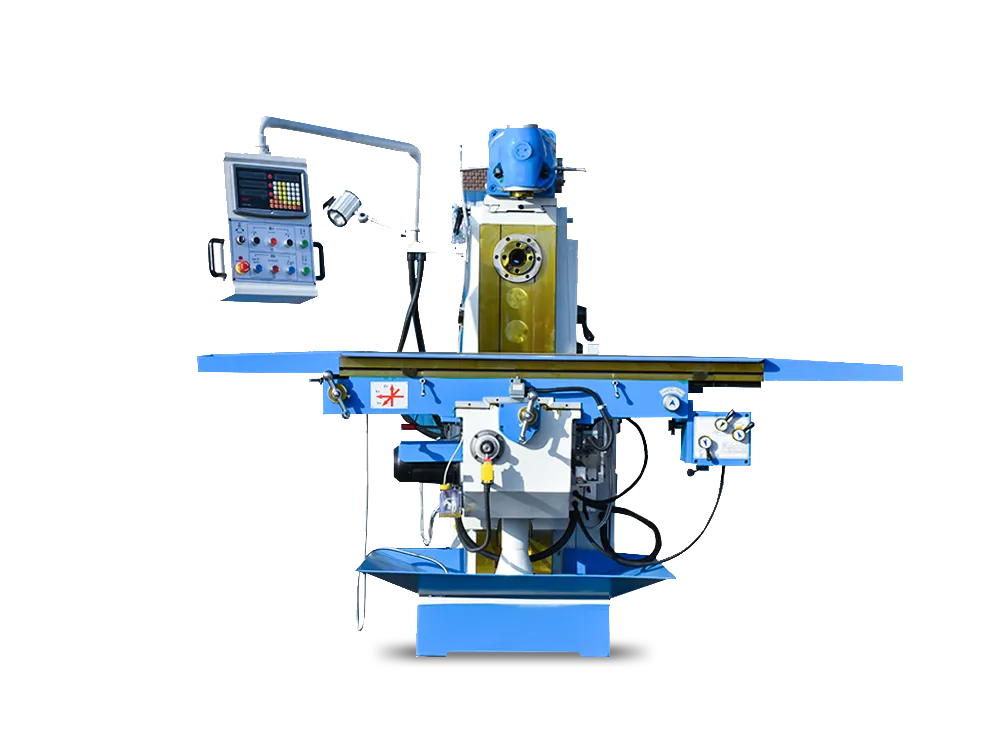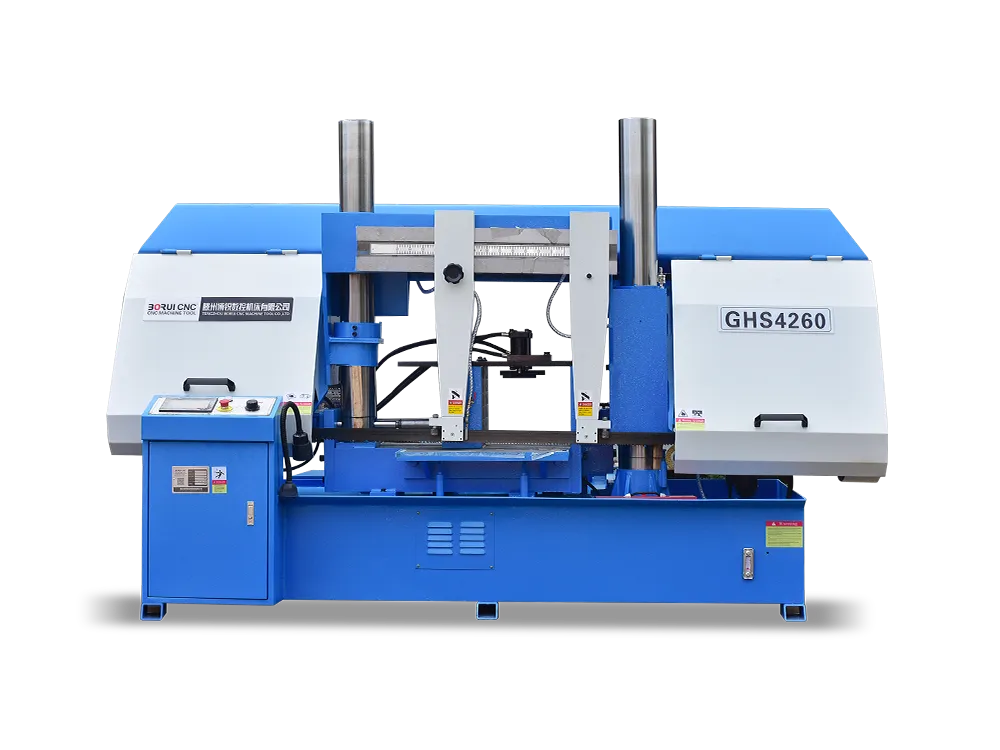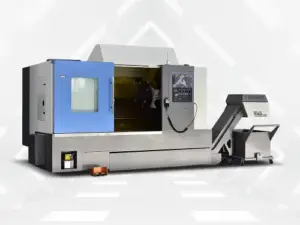
Você já viu formas e designs incomuns de vários metais, plásticos e madeiras? Tenho certeza de que sim. Mas você já se perguntou como essas formas são criadas? Tudo isso se deve às máquinas de torno. Entretanto, as máquinas de torno têm dois tipos: Tornos CNC e tornos manuais.
Existem Cinco tipos de tornos CNC. No entanto, hoje vamos nos concentrar na distinção entre tornos CNC e tornos manuais.
Se estiver pensando em entrar no negócio de moagem, é fundamental distinguir entre os dois tipos.
Visão geral do torno CNC e do torno manual
Como você sabe, o negócio de fresagem está se espalhando pelo mundo todo. Os fabricantes contam com uma série de máquinas CNC para realizar esse procedimento. Dentre essas máquinas, os tornos CNC e os tornos manuais são os mais usados. Ambos desempenham a função de moldar e projetar diferentes materiais. Portanto, o que os diferencia é a versatilidade de suas operações.
Por exemplo, a máquina de torno CNC é mais avançada e precisa. Vou explicar em detalhes. Os CNCs são máquinas de controle computadorizado. Elas usam instruções especializadas de computador para sua operação. COMO? Na verdade, diferentes projetos desejados são fornecidos aos computadores na forma de instruções programadas.
O computador decodifica as instruções e orienta as ferramentas CNC a trabalhar. Portanto, as máquinas CNC se destacam por sua precisão e exatidão. Por outro lado, os tornos manuais usam métodos convencionais para sua operação. Eles usam instruções humanas para executar procedimentos de fresagem, o que compromete sua precisão.
Diferenças críticas entre o torno CNC e o torno manual
Você teve uma ideia básica das operações de ambas as máquinas? Se sim, devemos passar para a próxima etapa, que é entender suas diferenças fundamentais. Como eu disse acima, ambas variam em muitos aspectos, desde seus projetos até suas operações. Vamos nos aprofundar nos insights e descobrir o que as distingue.
1-Estruturas e projetos
A principal diferença está em sua estrutura e design. Um torno manual tem quatro partes essenciais: base, cabeçote, cabeçote móvel e carro. A base coloca a peça de trabalho e o cabeçote móvel a segura e movimenta. O cabeçote móvel segura as ferramentas de fresagem e o carro as movimenta.
Mas lembre-se, os seres humanos operam todas essas ferramentas. Eles usam pedais técnicos ou rodas para acionar as ferramentas de corte. Em palavras simples, um torno manual tem um projeto simples e convencional há muitas décadas. A máquina de torno CNC tem uma geometria e uma estrutura complexas na extremidade oposta.
Ele tem a mesma combinação dessas quatro partes: cabeçote, cabeçote móvel e carro. Em caso afirmativo, qual é a diferença? Na verdade, os computadores controlam todas elas. As ferramentas de fixação e movimentação seguem as instruções do computador e fazem desenhos precisos.
2- Métodos de processamento
Expliquei suas partes na seção acima. Portanto, entender seu processamento será muito fácil para você agora. O método de processamento de um torno manual é simples. Por exemplo, uma peça de trabalho é colocada na base e o cabeçote é ajustado para segurá-la e movê-la. As ferramentas de corte são presas a um carro que se move e ajuda as ferramentas de corte no projeto.
No entanto, o carro se move com a ajuda de volantes ou pedais. Esse volante é operado por um operador especializado. Isso significa que o processamento completo dos tornos manuais está nas mãos de seres humanos. Eles controlam e ajustam o alinhamento e a velocidade de todas as ferramentas. Portanto, seu método de processamento exige tempo e esforço.
Em controvérsia, os tornos CNC têm métodos de processamento modernos. Eles contêm as mesmas ferramentas de um torno manual, mas não são controlados por humanos. Os seres humanos não contribuem para moldar ou cortar o material. Eles fornecem um projeto de amostra para o computador.
O computador controla todas as outras tarefas. Ele instrui o carro que contém as ferramentas de corte a se mover em uma velocidade controlada. Além disso, o computador conduz as ferramentas de corte para criar formas específicas com precisão. Portanto, não é errado dizer que o método de processamento de um torno CNC é como o de um robô.
3- Precisão de processamento
A precisão do processamento é outro fator que os diferencia. Honestamente falando, um torno manual não oferece alta precisão. O motivo é que eles são operados por humanos. O operador precisa reposicionar a peça de trabalho várias vezes. Esse reposicionamento afeta a precisão. Além disso, operadores menos experientes e a fadiga também interrompem a precisão do produto.
Por outro lado, o torno CNC é totalmente controlado por um computador. Esse sistema computadorizado elimina qualquer chance de erro humano. Ele vem com um sistema avançado de sensores. Se alguma ferramenta se desviar do funcionamento adequado, esse sistema o alertará imediatamente. Portanto, o produto final é mais preciso e exato.
4- Requisitos de instalação
Ao selecionar um torno para sua empresa, a instalação é a principal preocupação. Comparativamente, os tornos CNC exigem procedimentos de instalação complexos. Essas máquinas têm um tamanho significativo devido à adição de seus componentes avançados. Portanto, é necessária uma área ampla para sua instalação.
Além disso, eles usam um sistema devidamente controlado por computador. Portanto, também é necessária uma estação de trabalho separada. Lembre-se de que essas máquinas CNC produzem uma quantidade enorme de calor. Portanto, é necessário instalar sistemas de resfriamento padrão para evitar o superaquecimento.
Por outro lado, os tornos manuais são muito fáceis de instalar. Eles não usam peças extras de ferramentas, portanto, são menores e não requerem muito espaço. Entretanto, seu design convencional é mais propenso a vibrações. Portanto, é fundamental colocá-los em uma plataforma equilibrada. Por fim, é obrigatório colocar os dois tipos de torno em um local ventilado para um trabalho eficiente.
5- Cenários de aplicativos
As diferenças no projeto e na operação de ambos os tornos fazem com que sua usabilidade seja diferente em vários campos. Um torno manual com um design direto forma produtos de design simples. Por exemplo, ele é usado para consertar diferentes peças quebradas de vasos e eixos. Além disso, sua usabilidade é padrão em pequenas oficinas que criam projetos menos precisos.
Além disso, o torno manual é útil para estagiários em uma empresa de fresagem. Seu design fácil de operar facilita o aprendizado dos conceitos básicos de fresagem. Por outro lado, um torno CNC é específico para a criação de projetos e produtos complexos. É uma máquina robusta, portanto, pode lidar facilmente com a fresagem de diferentes materiais.
Como resultado, os tornos CNC são usados para fabricar itens complexos, como geladeiras, barcos e peças aeroespaciais. Além disso, eles fazem muitas cópias idênticas rapidamente, alternando instruções predefinidas. A precisão dos tornos CNC os torna ideais para a produção de equipamentos médicos vitais.
6- Custos de investimento e manutenção
Os dois tipos de tornos variam em termos de custo. Se discutirmos o torno manual, ele oferece um custo inicial baixo. Isso se deve a seus projetos simples e tradicionais. Ele não usa ferramentas complexas nem sistemas computadorizados que aumentam os custos de manutenção. Por exemplo, seus componentes podem ser mantidos facilmente com o uso de lubrificantes baratos.
Além disso, sua estrutura simples não requer pessoal qualificado, o que reduz os custos de mão de obra. Todos esses fatores tornam os tornos manuais econômicos. Mas lembre-se de que ele não é útil para operações complexas. Portanto, qualquer pequeno erro ao manusear um material caro pode custar mais caro. Por outro lado, os tornos CNC são relativamente caros.
Seu projeto complexo, ferramentas avançadas e sistemas computadorizados contribuem para o aumento dos custos. Além disso, o mau funcionamento de qualquer componente aumenta ainda mais os preços de manutenção. No entanto, a precisão do torno CNC é de alto nível. Ela proporciona satisfação ao cliente e aumenta as vendas. Tudo isso compensa seu custo total.
Torno CNC ou manual: O que você deve considerar?
Eu diria que a seleção desses tornos depende da natureza de seu negócio ou projeto. Por exemplo, um torno CNC é a melhor opção para a usinagem de projetos complexos. Mas eles são muito caros, o que é uma desvantagem. Por outro lado, um torno manual é a melhor opção se o seu projeto exigir projetos simples.
No entanto, é fundamental conhecer os dois lados do quadro antes de tomar qualquer decisão. Vou simplificar: Tanto os tornos CNC quanto os manuais têm vantagens e desvantagens. Por exemplo, um torno CNC é caro e não será adequado se você tiver um orçamento apertado. Além disso, seu custo de manutenção é um agravante.
O que realmente se destaca para mim é sua precisão e exatidão. Como eu disse, ele é totalmente computadorizado, portanto, você não verá esforços humanos afetando a precisão. Isso aumenta a reputação de sua marca e melhora os preços gerais de venda. Todos esses fatores fazem com que minha recomendação seja favorável ao torno CNC.
Um torno manual é uma opção econômica. Você deve usá-lo sem hesitação se começar a fresar em pequena escala. Mas lembre-se de que ele não oferece precisão nos produtos. Portanto, os produtos podem ficar comprometidos em termos de durabilidade. No entanto, a inspeção e a manutenção adequadas podem melhorar o nível de precisão.
Perguntas frequentes
Quanto tempo dura um torno CNC?
A vida útil de um torno CNC depende principalmente de sua manutenção. No entanto, um torno CNC ideal dura de 15 a 20 anos. No entanto, com os devidos cuidados, é possível prolongar sua vida útil.
Por que um torno CNC é melhor do que um torno manual?
Um torno CNC é melhor do que um torno manual em muitos aspectos. Ele tem um desempenho exemplar devido aos sistemas controlados por computador. Além disso, é rápido e pode usinar todos os tipos de materiais.
Qual é a manutenção mensal de um torno CNC?
A manutenção mensal do torno CNC inclui:
- Verificação do desempenho do componente.
- Substituição de peças defeituosas.
- Adição de lubrificantes
- Inserção de agentes refrigerantes.
Conclusão
Os tornos CNC e manuais são usados no procedimento de fresagem. Ambos variam em diferentes aspectos. Por exemplo, um torno CNC é um dispositivo avançado que produz produtos precisos. Ele usa instruções do sistema de computador e molda vários tipos de materiais com eficiência. No entanto, ele é caro devido à sua geometria desafiadora.
Os tornos manuais usam métodos convencionais para suas operações. Ele tem um design simples e uma estrutura de fácil manutenção. É operado por humanos e não requer habilidades substanciais. Além disso, é uma opção econômica devido à sua simplicidade. Lembre-se de que seus produtos têm baixos níveis de precisão, o que é uma desvantagem.





